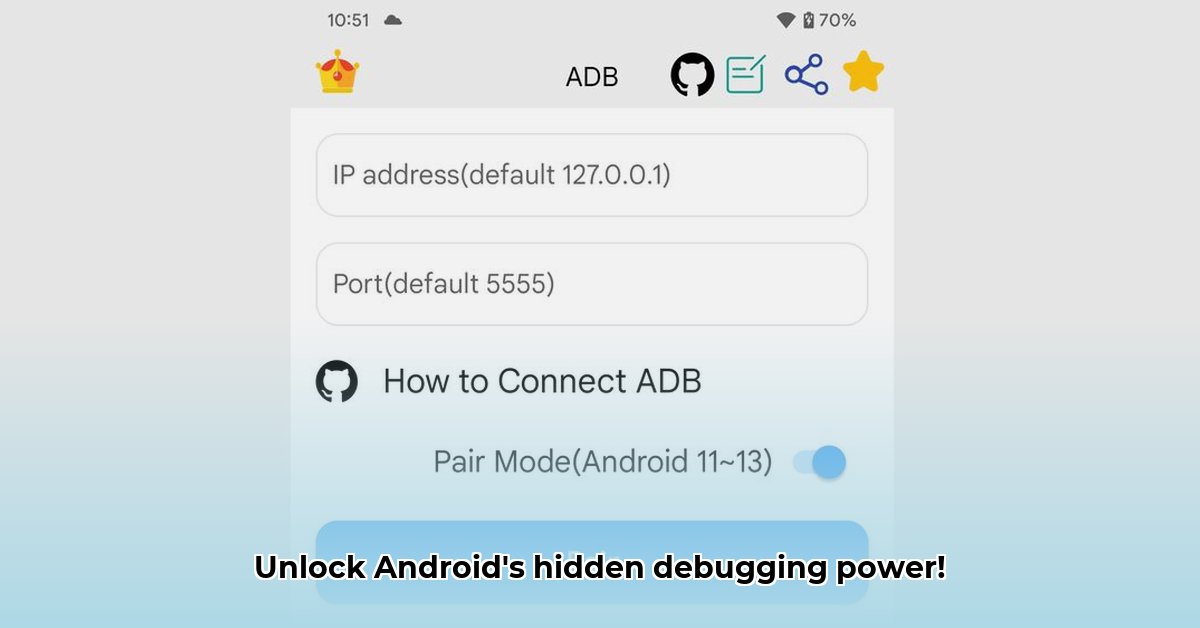
Comparing Android ADB Shell Debug Toolboxes
Debugging Android applications can be challenging. The Android Debug Bridge (ADB) shell provides powerful command-line tools essential for efficient debugging. This comparative review analyzes two popular ADB shell toolboxes—one from CNET (hereafter referred to as "CNET Toolbox") and another found on the Google Play Store (hereafter referred to as "Google Play Toolbox")—to help Android developers choose the best option.
Feature Comparison: Similarities and Subtle Differences
Both toolboxes offer a similar core set of features for managing Android devices. These include launching and uninstalling applications, managing device connections, monitoring running applications, capturing screenshots, transferring files, and even controlling media playback remotely. Both support a wide range of Android versions, from 4.x to the latest releases. Furthermore, both toolboxes incorporate advanced features such as wireless debugging (Android 11 and above), WiFi ADB support, local shell access, command history review, and colored text output.
However, significant differences exist in the availability of detailed information and documentation, as well as user feedback. This lack of transparency makes a comprehensive comparison challenging.
| Feature | CNET Toolbox | Google Play Toolbox |
|---|---|---|
| Core Features | Complete feature set as described above. | Complete feature set as described above. |
| Advanced Features | Wireless debugging, WiFi ADB, etc. | Wireless debugging, WiFi ADB, etc. |
| Documentation | Sparse, lacks detailed explanations. | Sparse, but potentially slightly more detailed. |
| User Reviews/Feedback | Unavailable or extremely limited. | Limited availability, unclear level of activity. |
| Update Frequency | Unknown | Unknown |
| Security Transparency | Low; limited information about security practices. | Moderate; subject to Google Play's security vetting. |
Risk Assessment and Mitigation Strategies
Utilizing third-party debugging tools inherently involves risks. The following table outlines the potential risks associated with each toolbox and suggests mitigation strategies.
| Tool Source | Security Risk | Compatibility Issues | Outdated Risk | Risk Mitigation Strategies |
|---|---|---|---|---|
| CNET | Moderate | Moderate | High | Thoroughly vet the source; explore open-source alternatives for increased code transparency. |
| Google Play Store | Moderate | Moderate | Moderate | Verify developer reputation; check for frequent updates; leverage Google Play’s security features (though not exclusively). |
Prior to installing any tool, meticulously review the requested permissions. Regularly monitor security news for any vulnerabilities impacting these tools.
Long-Term Viability: Choosing a Sustainable Debugging Partner
The lack of publicly available user reviews and detailed information regarding update frequency hinders a robust assessment of long-term viability for both toolboxes. Open-source alternatives might provide greater transparency, but require more user effort to verify functionality and security. Consistent updates are crucial for maintaining security and addressing potential bugs; therefore, selecting a toolbox with a proven commitment to updates is paramount.
Ultimately, the optimal choice depends on individual risk tolerance and specific requirements. Prioritizing security and the availability of updates remains essential for an efficient and reliable debugging experience.
Choosing the Right ADB Shell Debug Toolbox: A Practical Guide
Key Takeaways:
- Mastering fundamental ADB commands is vital for efficient development workflows.
- Advanced log filtering techniques significantly accelerate debugging and improve effectiveness.
- Understanding the implications of advanced ADB commands is crucial to maintaining system stability.
- A strategic approach to selecting and using ADB tools guarantees efficient and reliable debugging.
ADB Fundamentals: Building a Solid Foundation
The Android Debug Bridge (ADB) is the cornerstone of Android system interaction. Begin by mastering fundamental ADB commands such as adb install, adb uninstall, and adb devices. Proficiency in these foundational commands forms the basis for more advanced debugging techniques.
Logcat Mastery: Efficient Log Filtering
adb logcat streams system logs, offering invaluable insights into app behavior. Effectively using advanced filtering options, including grep, sed, awk, sort, uniq, tail, and head, is key to navigating the often-overwhelming volume of log data. These commands are not simply optional tools; they are critical for efficient debugging.
Advanced ADB Commands: Careful Consideration
While advanced ADB commands offer potential performance enhancements, they also introduce risks. It's crucial to thoroughly understand the consequences of each command prior to execution, particularly in production environments. Proceed only after careful research and evaluation.
A Strategic Approach to Toolbox Selection
Selecting the "best" ADB shell debug toolbox isn't about finding a single perfect tool; it's about building a comprehensive and adaptable toolkit.
- Master the basics: Begin by developing solid proficiency in fundamental ADB commands.
- Incremental integration: Gradually incorporate advanced log filtering strategies into your workflow.
- Thorough risk assessment: Carefully evaluate the potential consequences of advanced commands.
- Meticulous documentation: Maintain comprehensive records of ADB usage, including custom scripts.
A strategic approach to ADB toolbox selection and utilization is essential for ensuring efficient, robust, and reliable debugging.
⭐⭐⭐⭐☆ (4.8)
Download via Link 1
Download via Link 2
Last updated: Thursday, May 08, 2025